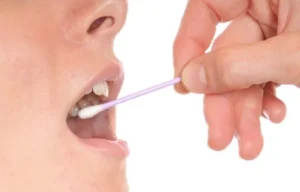
Can DNA tests be used to find half brothers and sisters?
Several laboratories offer genetic sibling tests, including half-sibling tests. These DNA tests compare the genetic material of one person to that of another, to determine the chances they are biologically related.
Sibling tests are useful for proving kinship and are sometimes used to determine paternity and prove if two people share the same biological father.
These tests may be needed on several occasions, such as when one parent is deceased, or otherwise unavailable to undergo testing. Sibling tests are occasionally required for legal purposes, such as when a mother wishes to grant social security benefits to two siblings. The tests may also be used for immigration purposes.
On rarer occasions, these tests are performed by people interested in learning about their biological ancestry following adoption.
Results are usually available after several days, with a high level of accuracy.
What is DNA testing?
Half-sibling DNA tests compare a person’s autosomal DNA (chromosomes 1-22) and the X chromosome with those of another person (or several people). While autosomal DNA is inherited similarly by both men and women, the X chromosome is gender-specific: women inherit one X chromosome from each parent and men inherit an X chromosome only from their mother. This chromosome will be paired with the Y chromosome inherited from the father (which is why it will not be considered in sibling testing). Many people can have similar DNA, but this test examines the relative similarity between two individuals.
Sibling test results differ from paternity test results in that this test compares genetic profiles and calculates similarity. The laboratory then combines various indexes to receive a combined siblingship index. The higher the calculated siblingship index, the higher the chances that both people are siblings. Lab analysis is used to give an informed assessment on the probability of kinship – whether the two are full siblings (from the same mother and father), half siblings (who share only one biological parent), or have no genetic relation (no shared parents).
Limitations of sibling testing
Unlike traditional paternity testing that analyzes samples from the child and alleged father, half-sibling testing does not always produce conclusive results. This is because the inheritance patterns of DNA markers shared between siblings are different than those between parent and child.
Moreover, the level of certainty is gender specific. The more accessible the genetic data, the higher the chances for meaningful results. In certain cases, it is recommended to include samples from more siblings, or other family members (that are definitely related) so results can be based on more extensive data.
In addition, another limitation of these tests is the ability to search for people with similar DNA in the data base. This is no trivial task since we all share certain DNA fragments with each other. In average, the test searches for the person with the closest genetic profile possible. The more distant the relationship, the less likely for genetic kinship to be revealed (such as third or forth cousins). Distant relatives tent to have less similar DNA fragments.

